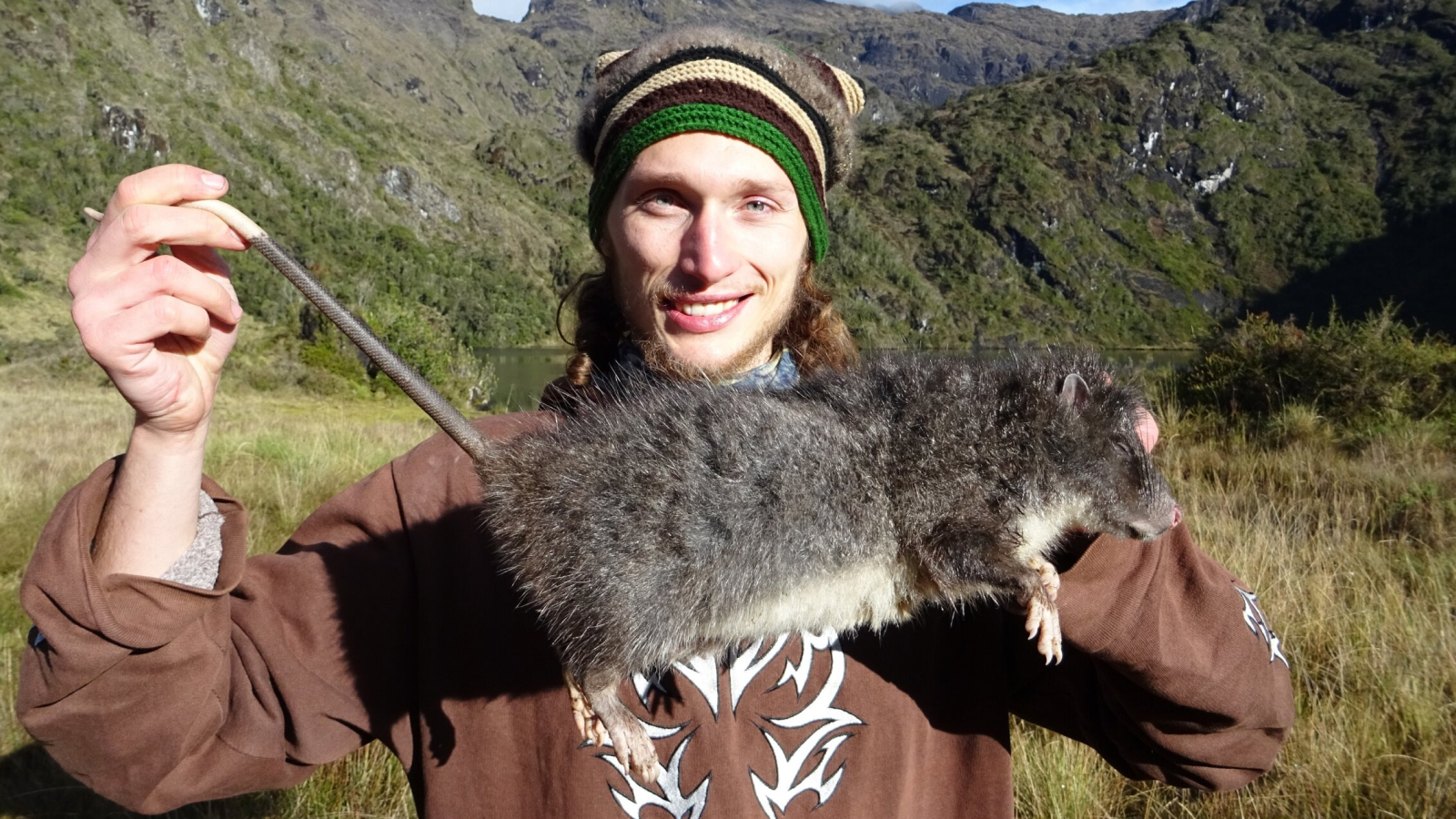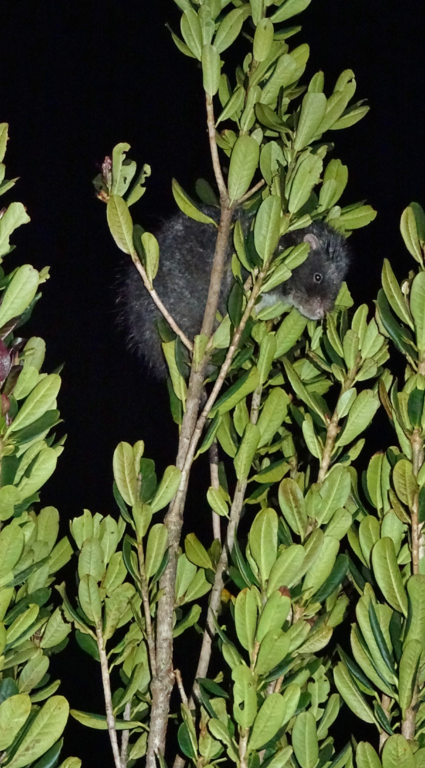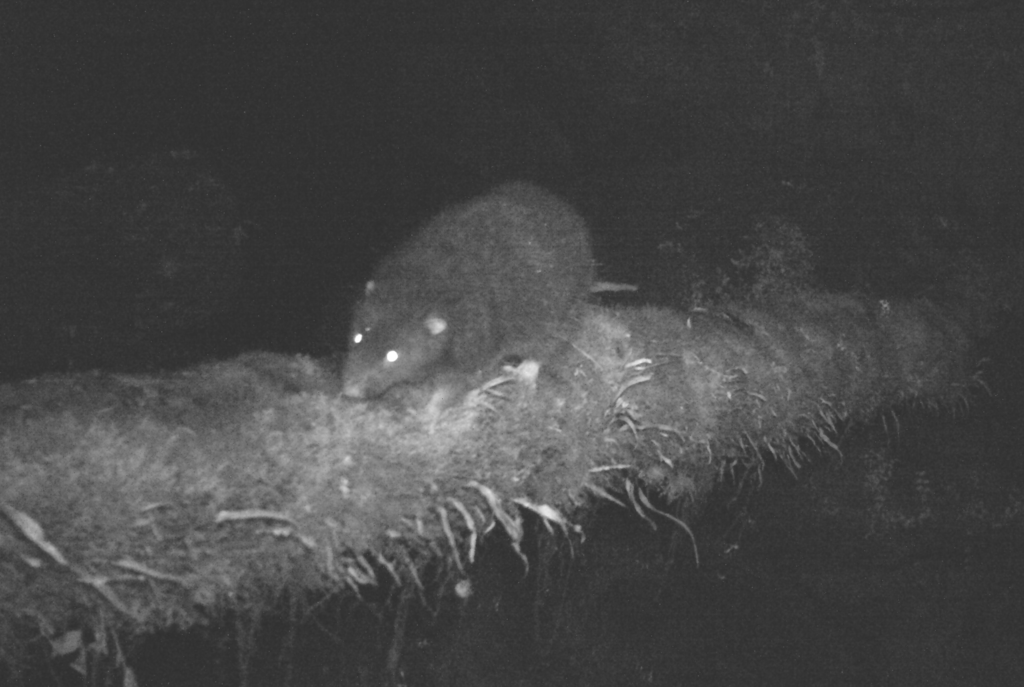33-inch-long 'woolly' mountain rat caught on camera for first time ever
The world's second-biggest rat species — a gargantuan woolly beast — was caught on camera in the mountains of New Guinea.

One of the largest rats in the world has finally been caught on camera, almost four decades after it was first discovered.
These gargantuan rats, named the subalpine woolly rat (Mallomys istapantap), measure up to 33.5 inches (85 centimeters) long from the end of their tail to their nose, and weigh as much as 4.4 pounds (2 kilograms).
The species was first identified in 1989 through museum specimens, but it had never been photographed or observed in the wild — until now.
In a new study published April 18 in the journal Mammalia, František Vejmělka, a doctoral candidate at the Czech Academy of Sciences and the University of South Bohemia, has revealed the very first images of these rats in their natural habitat.
He captured the footage right at the end of his six-month expedition to the mountains of New Guinea, where the subalpine woolly rat is native to.
It is the largest species of rat in the Australia and Oceania region, and one of the largest species in the world, alongside the Gambian pouched rat (Cricetomys gambianus), which measures 34.6 inches (88 cm) from nose to tail.

When they were first scientifically described, researchers noted that subalpine woolly rats are usually found in montane forests and grasslands between 8,040 and 12,630 feet (2,450 to 3,850 meters) above sea level, live a nocturnal lifestyle, mostly eats plant matter, and nest in burrows. These rodents have sharp incisor teeth, thick fur and huge 3-inch-long (8 cm) paws.
Get the world’s most fascinating discoveries delivered straight to your inbox.
Little research has been done regarding this species in the decades since, due to its elusive nature and hard-to-access habitat, meaning it has never been formally observed, filmed or photographed in the wild before.
"It's astonishing that such a large and striking animal has remained so poorly studied. How much more is there to discover about the biodiversity of tropical mountains?" Vejmělka said in a statement.

On a six-month expedition to New Guinea, Vejmělka surveyed more than 60 species of rodents and marsupials on the slopes of Mount Wilhelm, the highest mountain in Papua New Guinea. With the help of local tribes, Vejmělka collected camera trap footage of the massive subalpine woolly rats and caught a few specimens, enabling him to obtain the first ever biometric measurements of the males of the species. The camera trap videos included a clip of one of the massive rats using a fallen mossy tree branch to cross a stream.
He also recorded data about the rats' parasites, diet and patterns of activity and movement, finding it spends its days hiding in underground burrows or tree canopies, and then climbs trees at night to feast on plant matter.
Vejmělka told Live Science that the extremely high and steep mountain ranges provide a unique ecosystem. "Their ancestors arrived from Asia to the island completely absent of any other terrestrial placental mammals (only marsupials and monotremes)," he said in an email, adding their size may be an example of insular gigantism — an evolutionary phenomenon where small animals on islands grow bigger than their mainland counterparts.
The discovery provides a glimpse into the mountains of New Guinea and the biodiversity there. "If it weren't for the indigenous hunters who accompanied me in the mountains and helped me locate the animals, I would never have been able to collect this data," said Vejmělka.

Jess Thomson is a freelance journalist. She previously worked as a science reporter for Newsweek, and has also written for publications including VICE, The Guardian, The Cut, and Inverse. Jess holds a Biological Sciences degree from the University of Oxford, where she specialised in animal behavior and ecology.
You must confirm your public display name before commenting
Please logout and then login again, you will then be prompted to enter your display name.
